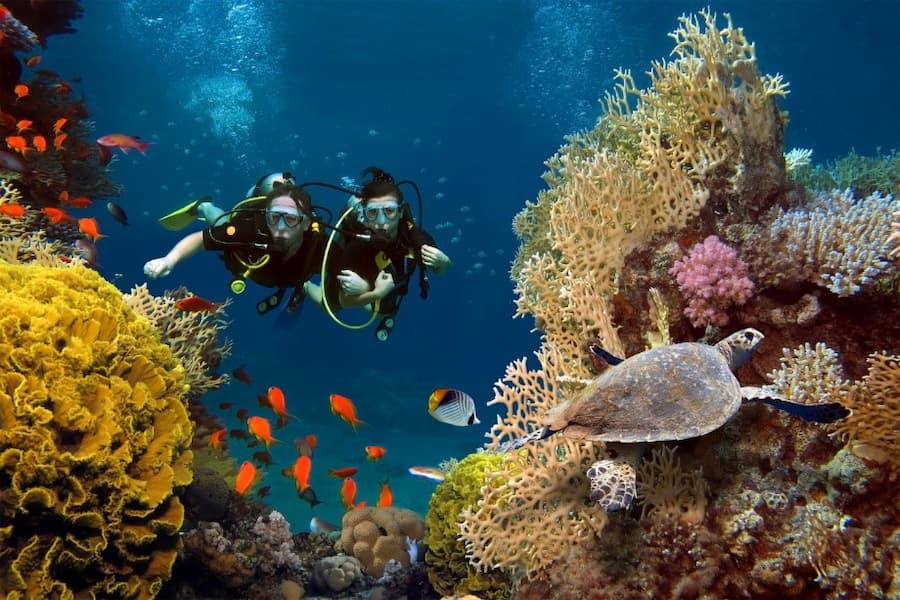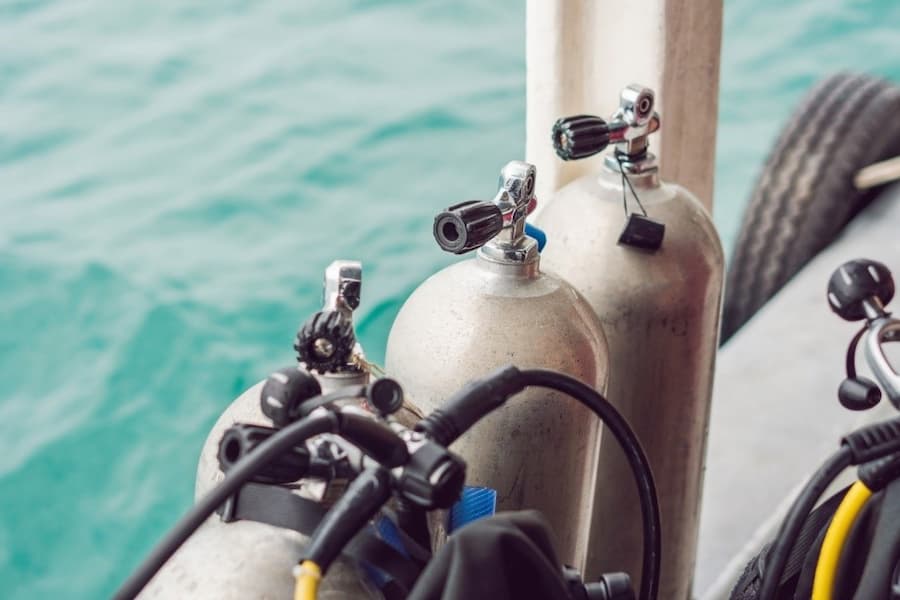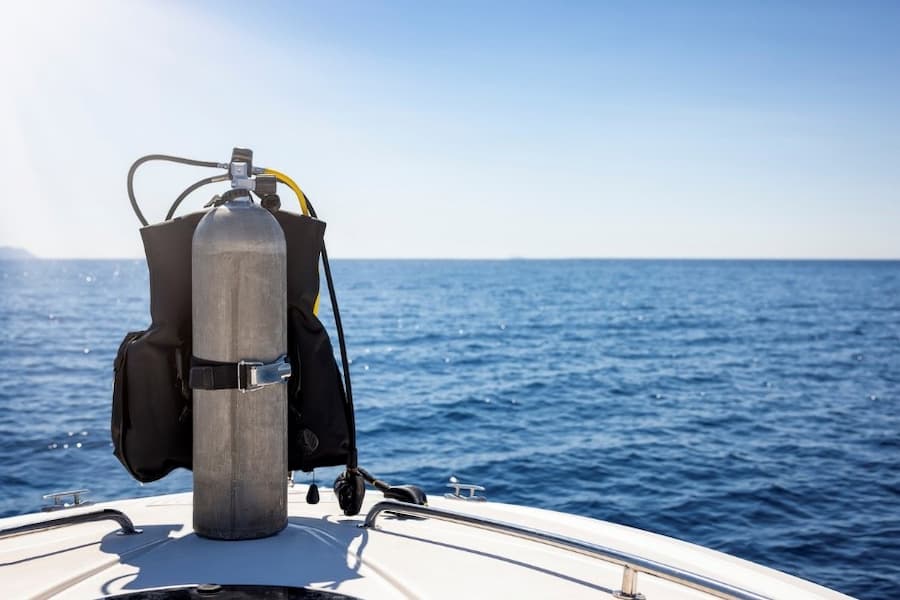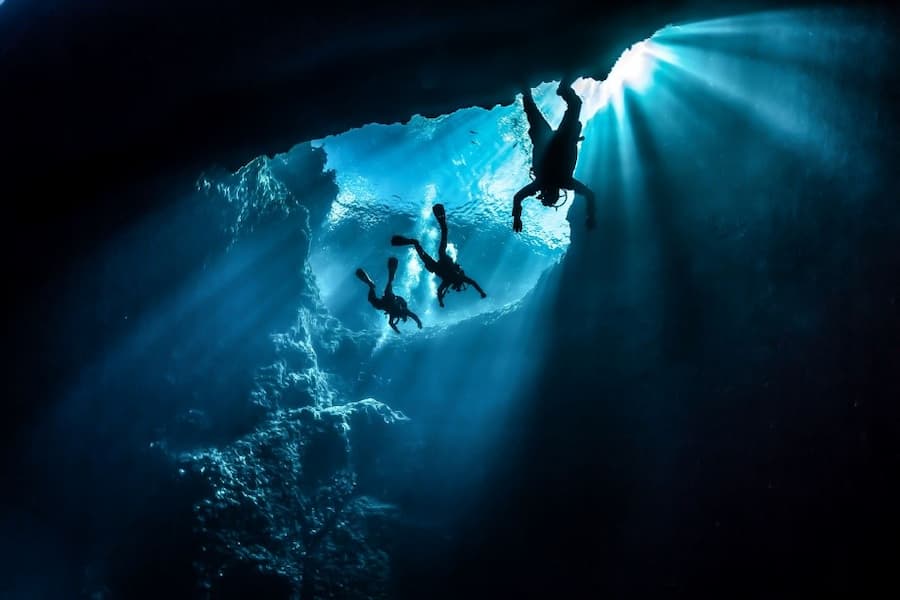How Bottle Gases Make Scuba Diving Possible
As a species, we love to push our human boundaries of exploration to new heights by pursuing adrenaline-filled activities. Scuba diving is one of these activities; despite its challenges, it represents a fascinating adventure into the depths of the underwater world, exploring the largely still unknown abyss. To make these thrilling aquatic ventures possible, though, we need bottled gas. Humans can’t breathe underwater; however, thanks to our clever resourcefulness, we have been able to make it happen, defying the laws of physics and biology.
But what gases allow us to scuba dive? And what is the role of pressure and its balance with volume to make this activity both exciting and safe? Dive with us into the science behind scuba diving, shedding light on the special role bottle gases play in making it possible.
Scuba Diving: Defying Depths with Physics and Biology
At its core, scuba diving relies on three principles: pressure, volume, and how gases behave within the human body. When we descend into the depths of the ocean, the pressure increases, becoming an impactful force influencing the interaction between us and the surrounding environment. As we go deeper, the relentless force of water also increases, compressing the volume of air spaces within our bodies. This compression directly impacts the volume of gases, such as nitrogen and oxygen, that are naturally present in our respiratory system, with physiological changes affecting the ears, sinuses, and even the airspaces in the lungs.
Monitoring and managing pressure variations during a dive is then indispensable, especially to avoid the phenomenon called nitrogen narcosis, which happens when the pressure exerted on the body at different depths leads to nitrogen absorption in the bloodstream. Bottle gases emerge here as essential to allow and facilitate a controlled and safe exploration of the ocean.
The Composition of Dive Gases: Nitrox, Trimix, and Other Gases
As we explained, dive gases are the pillars of scuba diving. Each gas is carefully composed to improve and optimise safety and performance underwater, meaning it can offer divers a tailored approach to facing the many challenges posed by different depths and environmental conditions. The two major players in scuba diving are nitrox and trimix, two popular mixtures, each serving a distinct purpose.
Nitrox
Nitrox, short for nitrogen-oxygen, is a specially blended gas with an increased oxygen content compared to standard air. The most common nitrox mixtures are enriched with oxygen levels beyond the typical 21% found in atmospheric air, often in the range of 32% to 40%. This higher oxygen concentration mitigates the absorption of nitrogen in the bloodstream, extending the allowable bottom time during a dive.
Nitrox’s main advantage is its ability to reduce the risk of decompression sickness, commonly known as the bends, by limiting nitrogen exposure at depth. This makes nitrox a popular choice for amateur divers seeking extended dive times without the complexities of more technical diving gases.
Trimix
Trimix is, instead, a more advanced and complex blend of gases containing oxygen, nitrogen, and helium. This specialised mixture is designed for extreme depths where standard air or nitrox would be impractical due to the heightened risk of nitrogen narcosis and oxygen toxicity. The specific composition of trimix varies depending on the targeted depth and the preferences of the diver. Common trimix blends may include oxygen levels ranging from 10% to 18% and helium in the range of 20% to 60%, with the remainder filled by nitrogen gas bottles.
The inclusion of helium in trimix is critical. Helium has a low narcotic effect, allowing divers to explore greater depths without succumbing to the disorienting effects of nitrogen narcosis. In addition, helium reduces the overall density of the gas mixture, minimising the effort required for breathing at depth.
Other Gases
In addition to nitrox and trimix, technical divers may resort to other specialised gases, such as heliox, a blend of helium and oxygen, sometimes used for deep-sea diving in commercial and military applications, and hydrox, a mixture of hydrogen and oxygen, employed in some experimental diving situations for its reduced density and potential decompression benefits.
We must bear in mind that, ultimately, the composition of dive gases reflects the indispensable consideration of the physiological effects of pressure at varying depths. Divers, especially those engaging in technical dives, work closely with gas blending experts to adhere to established protocols.
Breathing Underwater: Managing Gas Pressure in Cylinders
Diving gas cylinders function as compact gas reservoirs, providing a portable and self-contained source of compressed air for divers thanks to the specific blends of gases we discussed above. These cylinders, typically pressurised between 2000 to 3000 psi, store the breathing gas that divers rely on while submerged. Equipped with a regulator system, the cylinder releases air at a controlled rate to match the increasing ambient pressure as the diver descends. The gas also contributes to buoyancy control, allowing divers to manage their position in the water and interact with the environment around them. Divers monitor their air supply through attached gauges, emphasising the importance of training, certification, and equipment maintenance for safe and enjoyable underwater experiences.
Oxygen Toxicity: Balancing the Breath of Life
Oxygen toxicity is a critical aspect to consider in diving, as it poses potential dangers associated with elevated levels of oxygen in the breathing mixture. While oxygen is essential for life, at increased partial pressures, it can become toxic, leading to seizures and other severe health issues. In underwater environments, divers must carefully manage their exposure to high-oxygen mixtures, especially when using nitrox. The risk of oxygen toxicity rises with the depth and duration of the dive; it is then fundamental that divers stick to established safety guidelines, limiting exposure to high partial pressures of oxygen and incorporating safe diving practices, highlighting the importance of training and vigilance in maintaining a well-balanced “breath of life” underwater.
Dive into the Depths of the Ocean with Bottle Gases
As you gear up for your next underwater experience, remember to bring along reliable gas products that guarantee both safety and excitement during your adventure.
As bottle gas experts, at Bottle Gases, we know how important it is to have the right blend of gases with you, and we can provide you with the most appropriate solution to meet your needs. Our CO2 gas cylinders ensure excellence and safety so that you can pursue your hobbies and activities without worrying about your gas supply. Explore our online catalogue, and if you are not sure if we have what you are seeking, contact us for any questions; we will be happy to assist you.








